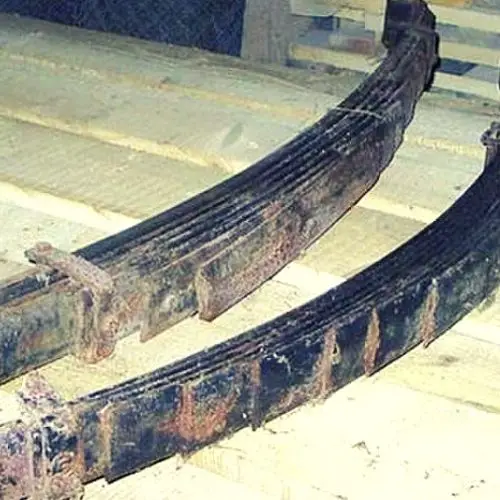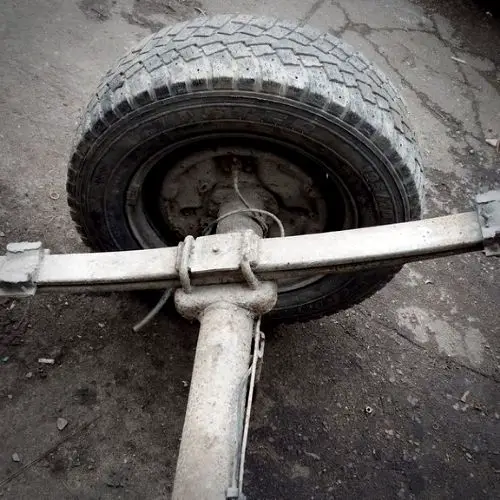
When it comes to welding different materials there are some which are very easy to work on while others are not. As a new welder, it is very important to know the basics about welding different materials and what precautions you need to take while tackling new materials. Leaf spring is one of those materials which is considered to be pretty tricky to weld. But if you are going to be tackling something like this it is important for you to have all the information about it. Let’s take a look at it, and how you should weld leaf springs.
Before we get into each of the sub-topics in detail it is important to keep in mind a few things. Leaf spring and spring steel show similar problems to cast iron while welding. That’s because of their high carbon content so you have to be careful about the pre- heating and cooling after the weld. You should consult a professional in case of any confusion, or even better, let them take care of the problem. Improper welding can cause cracks and brittleness around the areas of the weld. So in short welding leaf springs can be really dangerous.
WHAT TYPE OF STEEL IS USED IN LEAF SPRINGS
Contents
The most common alloy which was used for the construction of leaf springs was the alloy steel 5160. The reason for this is the alloy’s high strength mixed with ductility and very high resistance to fatigue. This alloy also has a composition of carbon and chromium.
Though they virtually all look the same, the type of truck or trailer they are on plays another huge factor. These days, you really can not tell exactly what they are made out of, the materials vary greatly from manufacturer to manufacturer. What we do know is that they are hardened and with high carbon content.
WHAT IS LEAF SPRING?
One way to identify what a leaf spring is is to look for stacked steel bars decreasing in length below wheels axles.
A leaf is what provides not only some suspension but also some form of stability to the vehicle. If you are driving around with a broken leaf spring it can make the car highly unstable and sometimes even impossible to drive.
If there is a broken leaf spring it can be quite expensive to get a new one and this is the reason why so many people are looking if they can fix it themselves.
CAN YOU WELD LEAF SPRINGS
The problem with welding leaf spring is not that it cannot be done when we are talking about the technical side of it. The real problem comes after the welding is complete, it can make the car unsafe.
This is because when you are applying heat to leaf spring it can make the carbon steel lose its tensile strength. If this happens it can result in a brittle area which might break easily when any amount of stress is applied to it.
Another issue that arises is that even if you are using a proper filler for welding there is a high chance it will not be as strong as spring steel which was in the original leaf spring. This will end up compromising the structural integrity of the vehicles.
On top of this, you have to be very careful about cooling down the leaf spring. If done too fast, it will end up brittle and if you do it too slowly it will end up becoming too soft.
The answer to the question though is yes, you can weld leaf spring and even do it successfully without compromising any of its original properties but you need to have good knowledge about its metallurgical properties and do it in a very controlled environment.
My father who was a welder for half of his life has welded a couple of them. The leaf springs have lasted for a few years after that, but I would say it is more of a temporary solution to the inevitable replacement of the leaf spring in the future. I do not see a good enough reason not to replace it just to save money in the short term.
WHAT ABOUT COIL SPRINGS?
Welding on a coil spring is not recommended at all as it can affect the tempering of the steel and make the point where the springs have been welded together or joined together very weak. There is a high chance of breakage at the point of the weld.
Although if you do have to do the weld, (which I would not in any scenario) it is recommended to use pre and post-heating on the metal to control the cooling down and any pockets of heat which can be formed on the base metal.
HOW DO YOU WELD SPRING STEEL?
A lot of people will claim that is impossible to weld spring steel or that you shouldn’t ever do it. They are not entirely wrong in the sense that welding spring steel is very tricky, and it only should be done by a professional. Most of the time spring steel can and will form cracks. The thing is a lot of times you can not see these stress cracks with the naked eye. It is almost inevitable that some parts of the structure will become weaker than the others.
In theory, it is simple: The first step towards welding spring steel is preheating, this is done so that the entire base metal has the same properties after the weld and there is a lack of heat-affected zones. The second part is the cooling down, a lot of times spring steel is drenched in oil to cool down the metal but slowly. After this sometimes tempering can also be done to bring some ductility back to the metal.
In reality, you really have to know what you are doing. Again, I would not risk it if you are ever planning to use the spring on a truck or a trailer.
CAN YOU FIX A BROKEN LEAF SPRING?
As I said earlier, and I can not stress this enough. I wouldn’t recommend it, once they leave spring breaks, joining them back will not result in the same strength that it had before.
So unless you are using the spring on the non-critical applications, I would say forget about it.
WHAT TO DO IF MY LEAF SPRING BREAKS
You need to know how a leaf spring actually looks like in its position to assess any kind of damage. Imagine them in a semi-elliptical position behind the wheels, attached to the frame and connected to the axle as the correct position. If the leaf springs look out of shape, inspect the springs further for any damage.

If the leaf spring is broken then you can probably feel it when driving. Your car might be leaning to one side and you might have a hard time keeping it on the road.
I would suggest asking for some professional help. You should not be driving around with a broken leaf spring because it is part of your car’s suspension, so make sure you get it fixed ASAP.
You should replace it with a new one but the obvious disadvantage to it is the cost factor. Spring can be quite expensive but on the other hand, if the welding job or the repair work doesn’t work out, it will become even more expensive.
FREQUENTLY ASKED QUESTIONS
If you have decided to weld leaf spring for whatever reason, you should have all your doubts cleared before you go on to start your project. This topic is very tricky, so you have to be very careful throughout all the process. I will try to answer some of the most common questions about the topic.
You will have to assess the damage before coming to a conclusion, if there is a simple crack then it might be fixable but if there is complete breakage then it might not be possible. A normal bend can be fixed but something else might not be. It would be a good idea to consult a professional.
There are multiple signs of wear and tear to your car which can indicate if there is a problem with the leaf spring. One thing you can do is park your car on a flat surface and check if the car is level or not. if the car is slouching to one side then there might be a problem with the leaf spring. Another indicator might be if there is any squeaking or scraping in the car.
One of the common problems which leaf springs face over time is that they can become straight. If they are not too old, you can try bending them back again but even then, their life becomes very limited. If the leaf spring is old then it might be a good sign that you need to replace them.
The answer to this question depends on a couple of factors, the first being for what do you want to do the weld? If it is for an important function then I would recommend seeking help from a professional but if you want to give it a go as a hobbyist for a non-critical application then go for it. Just remember the precautions you have to take with the metal.
CONCLUSION
To sum it all up, welding leaf spring, spring steel, and coil spring is pretty tricky. You will need a lot of experience and knowledge to get it right. Make sure to take the necessary precautions like pre- and post-heating and carefully choosing the correct filler for the job. But before you go try to weld on any of the materials, make sure you have assessed the damage correctly and do a cost-benefit analysis about welding and fixing or replacing the whole thing.
